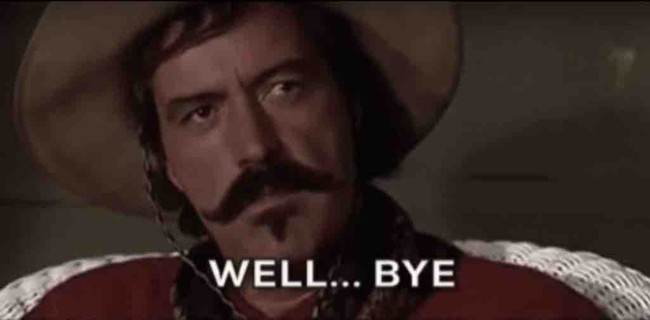
www.rediscoverthe80s.com
Why 1980s Pop Culture Is the Most Missed Generation
Why 1980s Pop Culture Is the Most Missed GenerationThe 1980s—an era of neon lights, cassette tapes, iconic movie quotes, and unforgettable fashion. Even decades later, the 1980s remain the most celebrated and missed generation in pop culture history. From music that defined rebellion to movies that shaped imagination, the decade didn’t just entertain—it created culture. Today, its influence continues to echo in fashion trends, film reboots, and music sampling, proving that the magic of the ‘80s never really faded away.(Photo Courtesy: Client Supplied Custom Art)Meanwhile, if you want to try Tongits, Pusoy and Pusoy Dos, check out GameZone.1. The Soundtrack of a RevolutionWhen you think of the 1980s, one thing immediately comes to mind: the music. The decade exploded with creativity, producing legendary artists whose songs are still loved today. The rise of MTV in 1981 revolutionized how people consumed music—turning musicians into visual icons.Names like Michael Jackson, Madonna, Prince, Whitney Houston, Queen, and U2 dominated the charts, creating timeless hits that defined a generation. Songs like Billie Jean, Like a Virgin, and Purple Rain weren’t just popular—they shaped the global soundscape. Every beat carried emotion, rebellion, and energy that transcended generations.Even modern artists like The Weeknd, Dua Lipa, and Bruno Mars draw heavy inspiration from the ‘80s synth-pop and disco-funk vibes. This ongoing revival in sound proves that 1980s music isn’t just nostalgia—it’s timeless innovation.2. Movies That Defined ImaginationThe 1980s produced some of the most iconic films in history—movies that balanced adventure, heart, and creativity in a way no other decade has matched.Classics like Back to the Future, E.T., The Breakfast Club, Ghostbusters, Top Gun, Ferris Bueller’s Day Off, and The Goonies didn’t just fill theaters—they shaped how people saw friendship, courage, and growing up. Each film carried a unique blend of optimism and wonder that reflected the era’s hopeful spirit.The decade also birthed the modern blockbuster, thanks to directors like Steven Spielberg, George Lucas, and James Cameron. Their storytelling mastery created worlds that felt limitless—a feeling many fans today still chase when rewatching their favorite ‘80s films.Even now, Hollywood continues to revisit this era. Reboots and sequels like Ghostbusters: Afterlife, Top Gun: Maverick, and Stranger Things thrive because they tap into the universal longing for the ‘80s’ cinematic magic.3. The Fashion: Bold, Loud, and UnapologeticThe 1980s wasn’t about blending in—it was about standing out. Fashion became a form of self-expression and rebellion. Bright neon colors, shoulder pads, acid-washed jeans, and oversized jackets became the trademarks of cool.Icons like Madonna, Michael Jackson, and Cyndi Lauper turned clothing into identity statements. Hair was big, accessories were louder, and individuality was everything.Today’s trends—from retro windbreakers to chunky sneakers—are clear echoes of the ‘80s aesthetic. The revival of vintage brands and thrift fashion movements all point back to the decade’s signature style: fearless and fun.4. The Birth of Gaming and Tech CultureBefore smartphones and esports, there were arcades—glowing sanctuaries filled with the sound of coins, joysticks, and 8-bit music. The 1980s marked the golden age of gaming, introducing the world to classics like Pac-Man, Donkey Kong, Tetris, and Super Mario Bros.Nintendo and Atari transformed entertainment forever, making video games a mainstream hobby. Home consoles became a new kind of family bonding, and kids of the era remember the thrill of plugging in a cartridge and diving into pixelated adventures.Even modern gaming culture owes its roots to this decade. The rise of retro game collections and remakes proves that the spirit of the ‘80s gamer never left—it just evolved.5. TV Shows That Captured Real Life and FantasyTelevision in the 1980s was just as influential as music and film. From sitcoms like Family Ties, Cheers, and The Golden Girls to dramas like Knight Rider and Miami Vice, the small screen offered both laughter and adventure.Saturday morning cartoons were sacred—He-Man, Transformers, Thundercats, and Teenage Mutant Ninja Turtles defined childhood imagination. These shows weren’t just entertainment; they became cultural rituals, teaching values of friendship, teamwork, and courage.Streaming platforms like Netflix and Disney+ continue to revive these series or create spin-offs because the demand for ‘80s storytelling simplicity and heart never went away.6. Simplicity and Connection in a Pre-Digital WorldAnother reason the 1980s is so missed? It was the last decade before digital dominance. People experienced entertainment together—dancing at parties, watching shows live, recording mixtapes for friends, and talking face-to-face.There was no constant scrolling, no social media comparison. The joy of the ‘80s came from real-world connection—from shared laughter to spontaneous fun. Life felt slower, but in the best way. That authentic social bond is what people crave again in today’s hyper-connected but emotionally distant world.7. Cultural Optimism and Creative FreedomThe 1980s represented hope and creative explosion. Political and social shifts inspired music and art that celebrated individuality. Youth culture was vibrant—people dared to dream big and express themselves loudly.Unlike the heavily curated culture of today, the ‘80s thrived on imperfection and experimentation. Every mixtape, dance routine, and movie montage felt spontaneous, pure, and passionate. This fearless creativity shaped a generation that still inspires innovation across all art forms.8. The Legacy Lives OnEven decades later, the influence of 1980s pop culture continues to dominate. Whether it’s through retro-styled video games, synthwave playlists, or vintage film aesthetics, the ‘80s never really ended—it just adapted.Social media communities celebrate ‘80s nostalgia through fan pages, TikTok trends, and collectibles. Fashion brands collaborate with old-school icons, while younger generations rediscover the decade’s charm.The enduring legacy of 1980s pop culture proves one thing—its impact wasn’t just historical; it was emotional. It represents a time when creativity was unfiltered, and happiness felt simpler.Conclusion: Why We’ll Always Miss the ‘80sThe 1980s wasn’t perfect, but it was pure magic. It was the decade that defined what it meant to have fun, to express freely, and to dream without limits. Its music, movies, fashion, and values continue to influence every aspect of modern life—because it captured something timeless: authenticity.People miss the ‘80s not just for its trends, but for its feeling—a sense of unity, wonder, and bold individuality. It reminds us that before the age of algorithms, there was an age of imagination. And that’s why the 1980s will always be the most missed generation in pop culture.FAQs1. Why is 1980s pop culture still popular today?Because its music, movies, and fashion embodied originality and joy. Many modern artists and brands still draw inspiration from its timeless energy and creativity.2. What are the most iconic symbols of 1980s culture?Neon colors, cassette tapes, arcade games, boomboxes, denim jackets, and blockbuster films like Back to the Future and Ghostbusters define the era.3. How did the 1980s shape modern entertainment?The ‘80s laid the foundation for today’s pop culture—from music videos on MTV to franchise films, video games, and the rise of celebrity-driven media.















